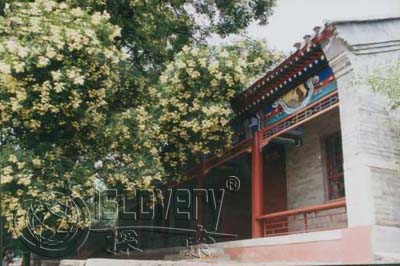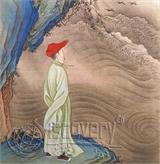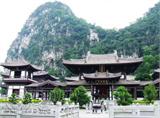Reviving Liushan and Establishing Schools (1) --- Guilin's Historical and Cultural Figures
Guilin is a famous historical and cultural city with a brilliant history. The beauty of Guilin's landscape is known all over the world, adding another globally recognized brand to Guilin's tourism culture.
Gu Lin served as an official in Quanzhou for three years. From the poems and articles he left behind, it can be seen that he loved this land very much. In his article "Inscription on the Examination of Quanzhou's Imperial Examinations by Jing Suo Xianggong," he wrote: "This place lies between Jiuyi Mountain and Cangwu, where Emperor Shun once traveled, gradually spreading the virtues of rites and music for a long time. At the beginning of the country, it was separated from Yongzhou and subordinated to Guilin." He believed that according to its mountainous terrain and picturesque scenery, it should produce many virtuous and talented people. Looking at it now, it indeed turned out to be true. Based on Jiang Mian's research, he made supplements for figures like Dou Daoweng and Chen Mengbin. He also wanted to compile the Qingxiang Figures Chronicle based on historical records to highlight the local spiritual essence, but unfortunately, he was about to transfer to Taizhou, so he could only leave this task to his successor. During his term, Gu Lin added pavilions and buildings, such as building Qiujia轩, Hejiang Pavilion, Lusheng Pavilion, rebuilding Xiangfeng Tower, and constructing Si Liu (Liu Zongyuan) Pavilion and Yulou Mountain Pavilion in Guanyang. The "Guangxi General Gazetteer" praised him as someone who prioritized nurturing talents and scholars. However, his greatest achievement was rebuilding the Liu Hou Shrine and fully restoring the Liushan Academy.
According to the county gazetteers, there were no records of school education in Quanzhou before Emperor Taizong's Duan Gong period. In the first year of Duan Gong (988 AD), Liu Kai (947-1001) governed Quanzhou and was rewarded with 300,000 strings of coins by Emperor Taizong for successfully pacifying the Yao people of Xiyang (today's Ziyuan). Instead of pocketing the money, he used it to build a reading hall on Beishan Mountain and led scholars in lectures and readings there. This academy belonged to a place where state governors would lecture during their spare time from governance; if counted as a school, it would be considered the prototype of schools. In the first year of Zhiping under Emperor Yingzong (1064 AD), Wang Shixing became the governor and built the Confucius Temple and established schools at the foot of Fengpo Mountain in the northern part of the city, marking the beginning of schools in Quanzhou. In the first year of Shaoxing under Emperor Gaozong (1131 AD), Shi Weifan (from Meishan) promoted literature and education as a professor, earning admiration from scholars. However, by the time Gu Lin governed Quanzhou, 500 years had passed, and the academy had gone through repeated periods of prosperity and decline.




